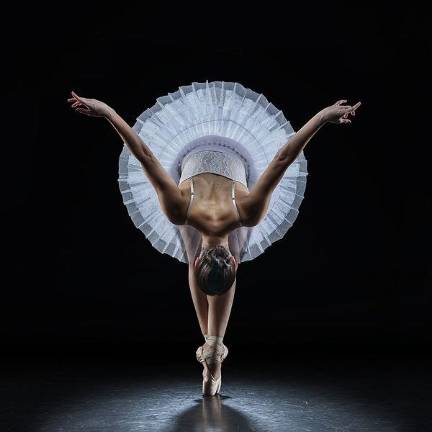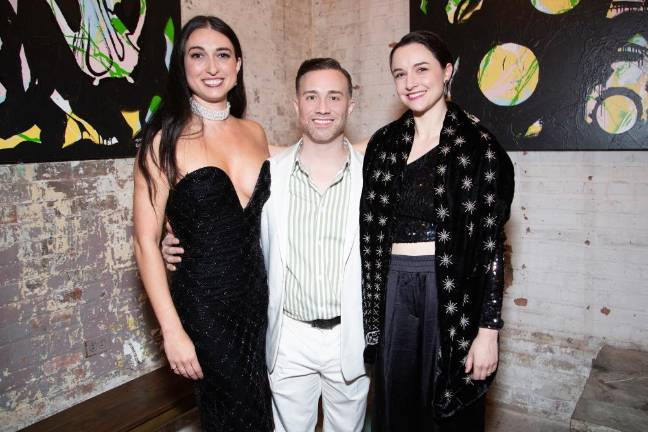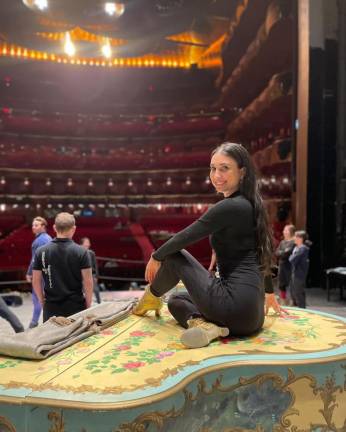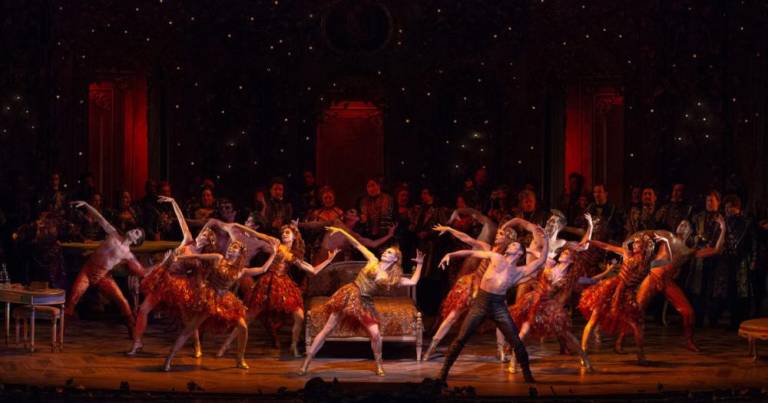Ballet Dancer’s Journey from GA to the Met Opera Stage
Elizabeth Yilmaz-Dobrow first fell in love with NYC while a young student from Georgia taking classes at the Joffrey Ballet. Currently, she is at the pinnacle of the ballet world, training for the opening of “Aida” at the Metropolitan Opera, where she’s been performing for a decade.




At just 11 years old, Elizabeth Yilmaz-Dobrow was already enamored with New York. The Georgia native came to the city for two summers to attend the dance intensive program at the Joffrey Ballet and always got emotional when it ended. “I fell in love with New York the moment I got here ... and I used to cry when I had to leave,” she said. “So I knew in high school. I was like, ‘It’s New York or nowhere.’”
She moved to New York at 19 to study dance at Marymount Manhattan College and has never left. The now-SoHo resident has been dancing with the Metropolitan Opera for a decade and is currently rehearsing for “Aida,” which opens on April 27. Although she’s already in her 10th season with the company, she said the experience of being on stage at Lincoln Center “feels like a real honor every single time.” “You’re honored to be part of the legacy that’s come before you,” she said. “And then it just is such a wonderful group of artists who are at the top of their game and you want to honor that by doing your absolute best every time.”
In February 2022, Yilmaz-Dobrow, 37, co-founded the artist salon series Art Bath, which she describes as “an evening of music and dance, visual arts, poetry and opera in one space all combined together.” The series was born from the pandemic, after she co-produced a socially distanced show one weekend in the East Village with dancers and chorus and orchestra members from the Met. Its upcoming shows will run from April 29 through May 13 at the Blue Building, a restored warehouse space on East 46th Street.
When she is not performing or producing, she is teaching. On Thursday mornings, she instructs 16 to 21-year-olds in the trainee program at the Joffrey Ballet, which she says is “a full-circle moment” and finds her students’ passion inspiring. “It really makes me hopeful,” she said. “The future of dance is bright.”
When did you know you would pursue dance professionally?
My mother runs a dance studio, so my whole life was running around the dance studio and being backstage at theaters. It was almost my babysitter in a way, the theater and the dance studio. It wasn’t until I actually got to college as a dance major, that I really fell in love with it as an artist.
This is your 10th season at the Met. Explain what your job as a dancer there entails and how it’s different from dancing with ABT or New York City Ballet.
With the Met, there’s the different operas and each season is very different. You never know what opera is going to happen until they release the lineup. You play different characters, so for an opera like “La Traviata,” I’m in heels on a raked stage. It’s very Broadway style. And then another opera will be pointe work and classical tutus. So it’s just a wide range. Unlike New York City Ballet, it’s not a full-time, yearly contract. But I’ve been there, like many of the dancers, for several years. So you build up the operas that you have in your repertoire and then they generally bring you back because you know the work. Last season, I did five operas and this season, I’m doing three.
You were also a dancer with Ballet Hispánico. How long were you there for?
I was there for one season after college. I was very lucky to get right out of college and into a company. And the former director, Tina Ramirez, who just passed away last year, it was her last season as the director there and I got to be with the company during that season.
Tell us about your work with the students at the Joffrey Ballet.
The students I teach are actually in the trainee program, so they are between 16 and 21. It’s nice to see that age bracket so passionate and so hungry for dance. It’s really a bright spot in my week to teach them. They’re wonderful students.
You must be a mentor to them.
I think so. I think that’s one of the reasons perhaps they like having me is that I’m still a working professional dancer. And then I produce Art Bath and a lot of our volunteers come from Joffrey and Marymount as well because I’m on the advisory board there. Currently, I’m getting to perform; I’m producing, I’m teaching, so maybe I am a mentor in some way.
You’re married to musician Bill Dobrow. How did you meet? What is it like both being artists, especially during the pandemic?
I was at one of his performances and we met after the show. That was 10 years ago. There’s a language that I think artists speak naturally and we both speak that together, so we understand the rhythms that go along with having evening performances and the dedication it takes to practice. And then during the pandemic, like everyone, our world was shut down. There was no live theater and music and it was just kind of a time to regroup and recalibrate. And we both taught private lessons. He could do some music virtually, record at home and then send it along as well as I was teaching virtually for a long time.
Tell us what led to the founding of Art Bath.
There’s an Instagram with the dancers of the Met and I was running it. And I started organizing classes online for our community. So four times a week, we would have a ballet class. We were all on Instagram with our phones taking ballet classes in all parts of the world. I started organizing those classes and then that’s actually how Art Bath came along. We all missed each other so much and my co-producer Mara [Driscoll] and I did a small show in the East Village, 16 audience members, socially distanced, masked, everything. This was even before the vaccine came out. We put together a show of chorus members, orchestra members and dancers from the Met, just because it had been a year and we really missed each other. That’s when we realized, “We like doing this together and let’s keep creating” and then Art Bath was born from that first little show during the pandemic.
How can you describe the series?
It’s a somewhat immersive experience and gives the artists who are normally, many of them on larger stages and have a certain repertoire that they’re expected to do, a chance to try something different and experiment and a lot of times collaborate with people that they don’t get to normally. It’s about bringing the community together, trying new things and having a lot of fun along the way. And a lot of the things that have happened at Art Bath, the different performances and acts that we’ve put together, these artists have gone on to work again together in another capacity.